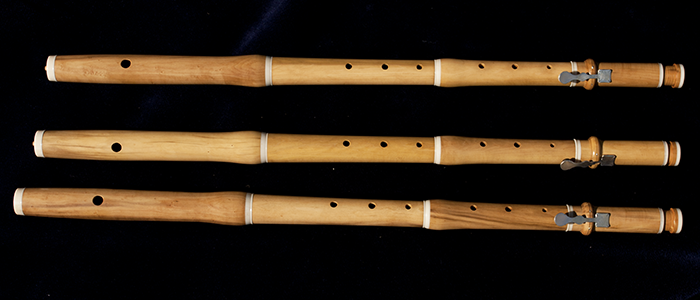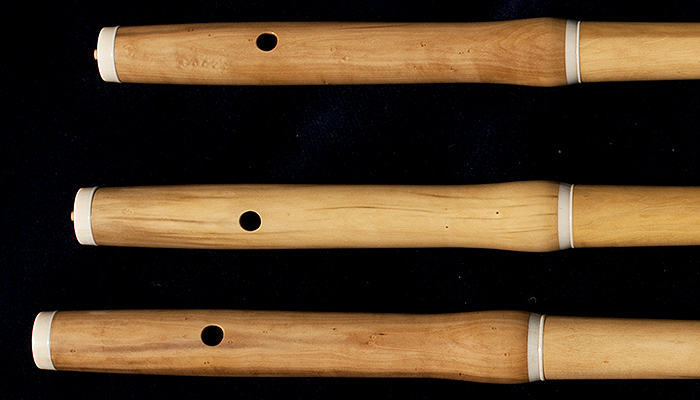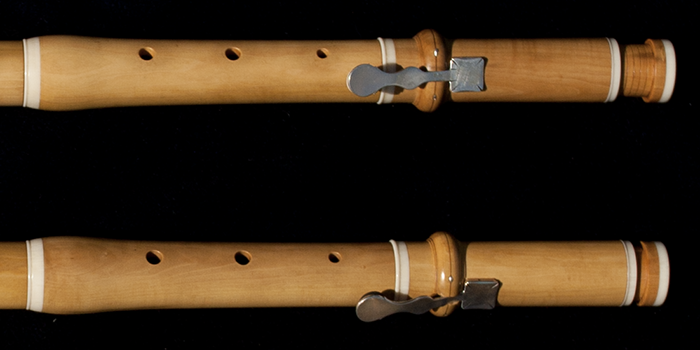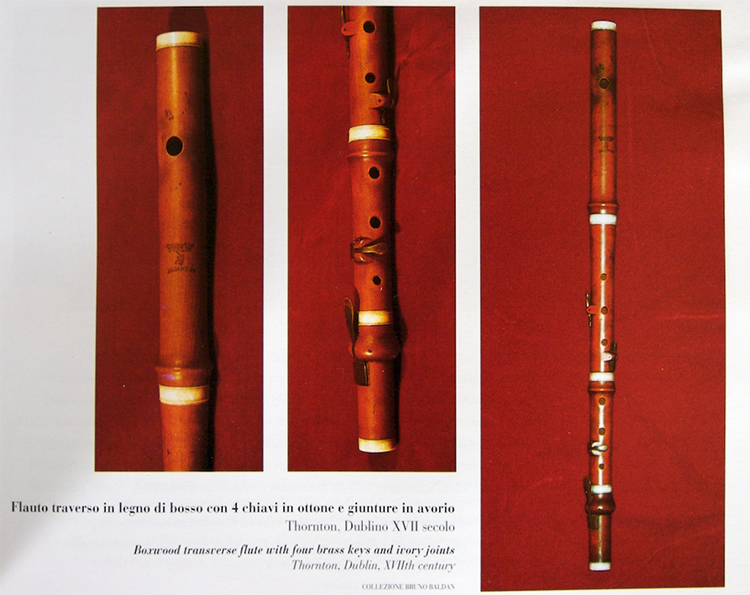Home » Flutes and Prices » Baroque Flutes
Martin Doyle completed his first set of baroque flutes in early 2000. Originally working with African Blackwood, he models his baroque flute design on an eighteenth century Rottenburgh baroque flute. Martin has more recently made baroque flutes from Boxwood – a timber that was commonly used during the Renaissance and Baroque periods (see images below).
Baroque Flute Features
- The bore is conical.
- Four piece flute with six synthetic ferrules.
- Single sterling silver key on the foot joint.
- Register foot for tuning the bottom note.
- Each flute comes in a pouch case.
Baroque Flute Prices last updated 11/07/2025
- POA basis (price on application). For further information, kindly contact Martin Doyle »
Martin Doyle Playing A Baroque Flute
This is an audio file of Martin Doyle playing one of his boxwood Baroque flutes. Martin plays King of the Blind – a waltz by Turlough O'Carolan. The tune features in Nicholas Carolan's facsimile edition of John & William Neal, A Collection of the Most Celebrated Irish Tunes proper for the violin, German flute or hautboy, which was first published in 1724.
One of Martin Doyle's favourite baroque flute players, Jana Semerádová, is featured in this news article:
The Day We Went To Sligo »
Baroque Flute Images

Three Martin Doyle baroque flutes made from Irish boxwood.

A Martin Doyle baroque flute made from Irish boxwood with a single key and an adjustable register foot.

The headjoints of three Martin Doyle baroque flutes made from Irish boxwood.

The footjoints with single key and adjustable register foot on a Martin Doyle Baroque flute made from Irish boxwood.
About Baroque Flutes
The following excerpt regarding Baroque flutes is from Rick Wilson's Historical Flutes Page – an informative and comprehensive website regarding the historical development of flutes.
A revolution in flute making took place in the second half of the seventeenth century. The instrument emerged as the baroque flute with significant modifications including a conical bore, the addition of a key for the right hand little finger, and a more ornate body made in several pieces. It was now fully chromatic (in large part because of the key), but more significantly, it was better suited tonally for a role as a soloist (primarily because of the bore change). The bore change made a big difference in sound – improving the intonation and increasing the volume in the lowest notes in particular – and incidently allowed the finger holes to be placed higher on the tube, making it slightly easier to handle with small hands than a renaissance flute at the same pitch. Read more »

A baroque flute made in the late 18th century from boxwood with four brass keys and ivory joint rings.